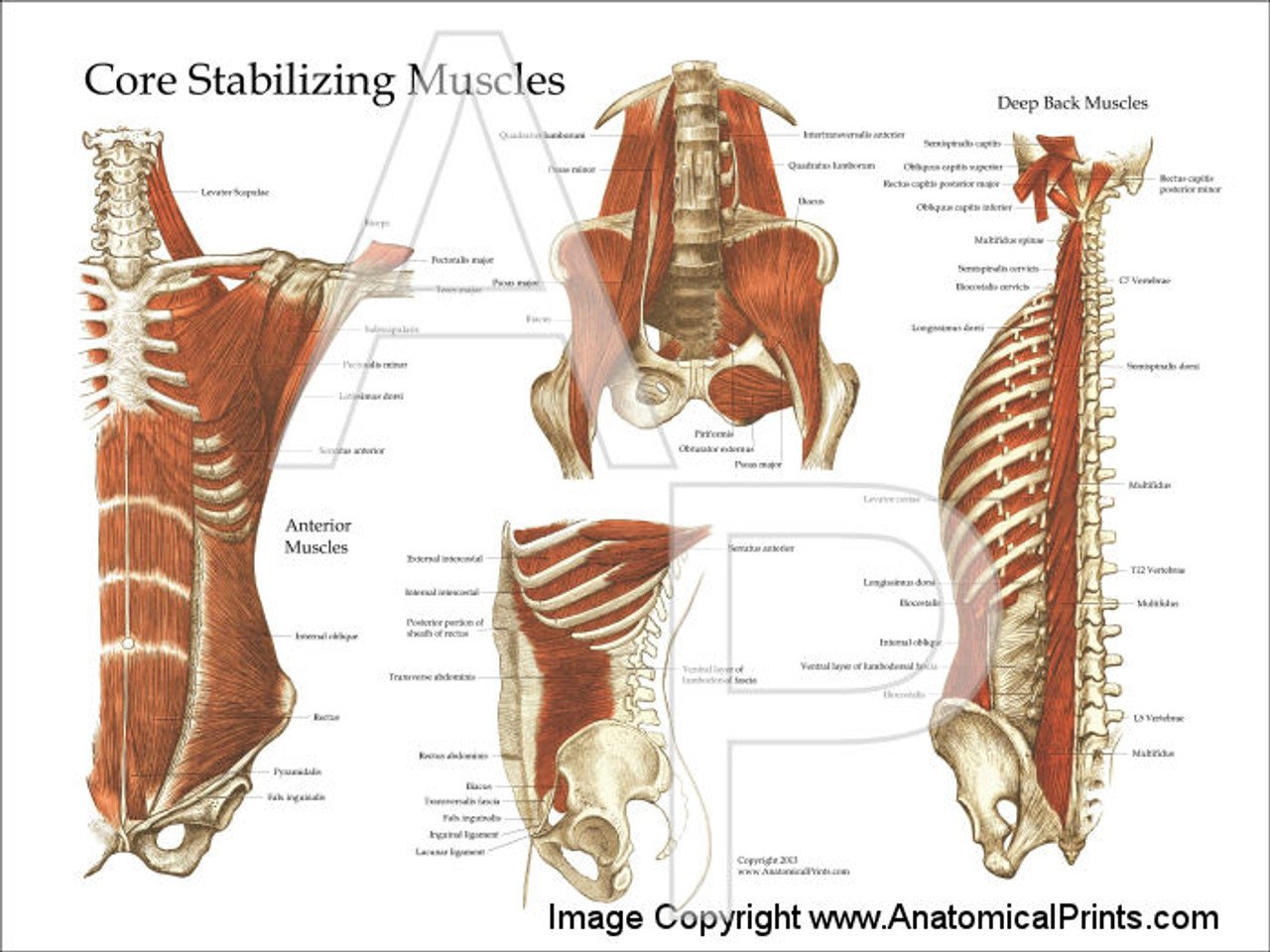Pilates & The Core
When people think of Pilates, they know it as a core workout. But what does that exactly mean? It is an hour of a hundred different variation of crunches? (most definitely not, the horror)
To understand what we do in Pilates class, we first have to understand what the core means. It really is a complex series of muscles, extending far beyond your abs, including everything besides your arms and legs – these include the gluteals (butt muscle), erector spinae, multifudus (back muscles), pectorialis (chest muscles), diaphragm (yes, the thing that helps you breath, and this is why we emphasis so much on breathing!) and pelvic floor just to name a few.
It is incorporated in almost every movement of the human body. These muscles can act as an stabilizer for movement, transfer force from one extremity to another, or initiate movement itself. Most of the time, these muscles are deep and hidden beneath the exterior musculature people typically train.
Your core most often acts as a stabilizer and force transfer center rather than a prime mover. Yet consistently people focus on training their core as a prime mover and in isolation. This would be doing crunches or back extensions versus functional movements like pushing, pulling and squatting, among many other functional closed chain exercises. By training that way, not only are you missing out on a major function of the core, but also better strength gains, more efficient movement, and longevity of health.
If you have trained with us you would have most probably heard the word ‘reactive core’ and that is what we mean! The core reacts to stabilise your trunk in whatever movement you’re doing and by doing so you are strengthening the core. So even when we are working the arms and legs, by focusing on what the rest of our body is doing, we are effectively also working the core.
While strength and endurance are an important component of core control, (which is why we still make you do isometric ab exercises like the hundreds), without motor control and function, your core is basically useless no matter how strong it is.
After having read the above, perhaps you can start to understand why people often sustain injuries while moving despite ‘working on their abdominals’. To sum it all up, Pilates focuses on the core, but the core is more than just your abdominals. They are the stabilizers of your body that allow you to effectively and efficiently transfer and produce force during dynamic movements This can include running, performing Olympic lifts, or picking up the gallon of milk far back in the fridge while keeping your back safe.

